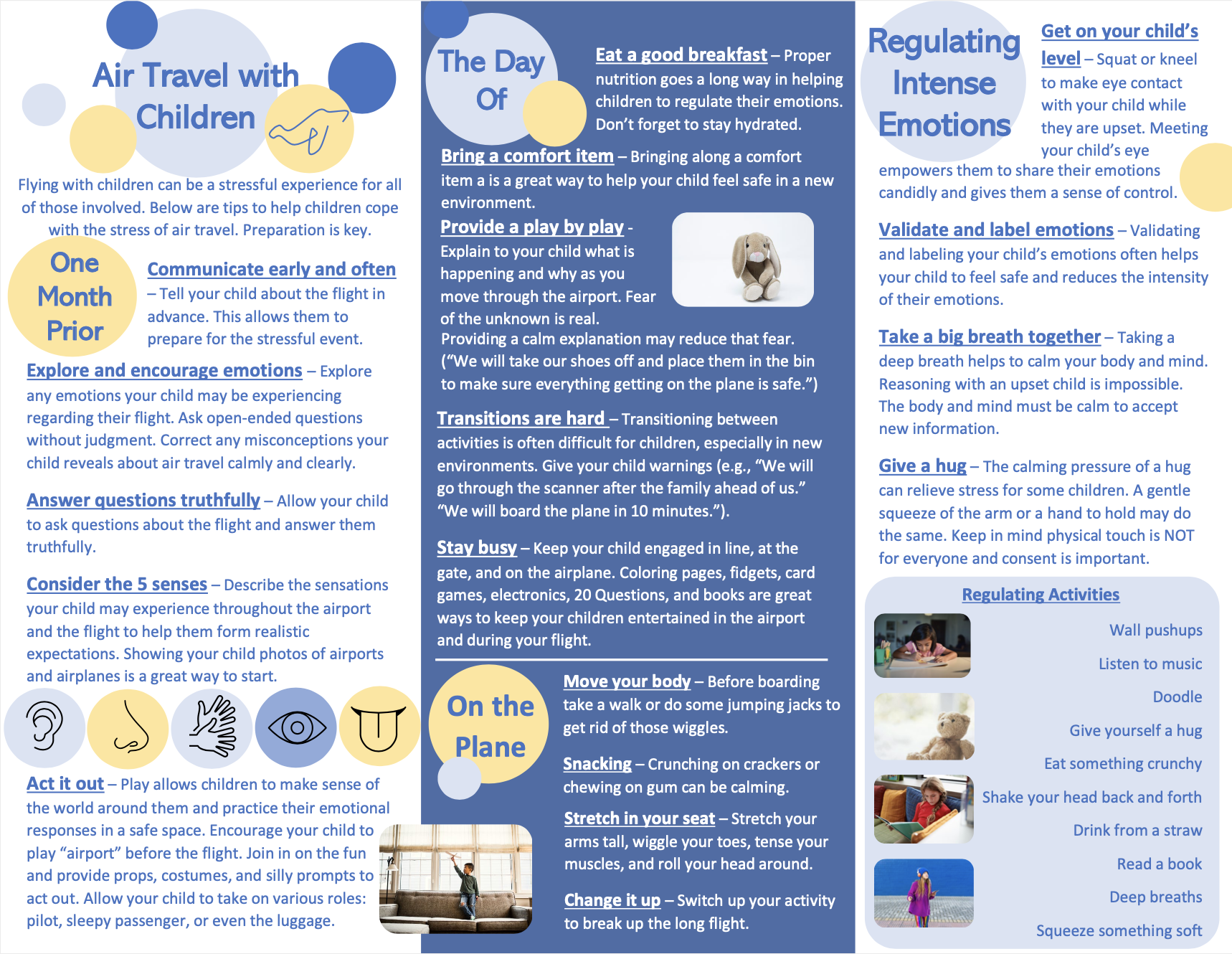Tips for Travel: A helping hand along the way
Pre-planning and Booking Your Trip
- Print and carry a copy of all travel documents (reservations, passport, driver’s license). Leave one copy at home with a trusted friend.
- Bring a list of emergency contacts (family, travel agents, travel booking websites, airlines and doctors). Leave a copy with a trusted friend.
- Share your itinerary with your travel companions and your family back home. The information can be critical to reach you in case of an emergency.
- Plan travel options in the event of cancellations or delays. Weather can be an unexpected variable at any time of year.
- Confirm your trip at least 24 to 48 hours prior to departure.
- Many cities have more than one airport or train station. Before heading out, check that you are going to the correct location!
- Remember to bring medications/refills and prescriptions, especially if you are going to be away for an extended period of time.
- To avoid blocks on your card(s), advise your bank and credit card companies that you are traveling.
- Carry a credit or debit card, as many airlines no longer accept cash payment for tickets, baggage fees or in-flight purchases.
For Rail and Bus Travel
- While reservations are encouraged, tickets are still sold at train stations and on board trains.
For Airline Travel
- When booking your flights, allow three hours between connecting flights, even if the airline or travel agent suggests a shorter window.
Identification Requirements
- Visit the TSA website for information regarding necessary identification, passports and visas needed for your trip.
Packing and Luggage Restrictions
- Contact your airline or visit its website to learn specific weight restrictions, costs and number of pieces permitted.
- Use luggage tags with your name, destination address and cell phone number. Put complete contact information on the inside of your luggage.
- Carry all valuables (cash, electronics, expensive jewelry) and important medications with you on the plane and not in stowed luggage.
- Visit the TSA or Amtrak websites for additional packing tips.
Arriving to the Airport, Bus or Rail Station
- Allow plenty of time to reach the airport, train station, port or bus depot. Traffic tie-ups, inclement weather or unfamiliar settings may impact your timeline.
For Airline Travel:
- Airlines suggest arriving at the airport two hours prior to departure for domestic flights and three hours prior for International flights. Lengthy security lines and unexpected delays may cause you to miss your flight.
- Be mindful of the entire process: check-in, security, locating and walking to your gate and boarding time. Some airlines do not accept checked baggage if there are less than 60 minutes before the flight.
For Rail and Bus Travel:
- Amtrak recommends that travelers arrive at least 30 minutes prior to the scheduled departure time and even earlier at larger stations and during busy travel times.
- If you are re-entering the U.S. on an Amtrak train departing a Canadian station, it is recommended that you arrive at the station at least one hour ahead of time to clear U.S. Customs prior to boarding your train.
Special Needs Services
- Please contact your airline (not the airport) ahead of time to request a wheelchair on your reservation or to receive more information on assisting travelers with special needs.
- Visit the TSA website to learn more about passenger support through the screening process.
Security Screening and Prohibited Items
- Please visit the TSA , FAA and Amtrak websites for a list of permitted and prohibited items, as well as additional information about carry-ons, liquids, medicine and the screening process.
Traveling with Small Children
- Please visit the FAA website for information and special tips on air travel with small children.
- You may also check with your airline on its policies before you make your reservations.

Pets and Service Animals
- Check with your carrier regarding regulations and guidelines for traveling with service animals or pets, since rules vary.
- FAA mandates that airlines permit dogs and other service animals to accompany a person with a disability on a flight. For more information, visit the FAA website. For more information on rail travel with pets, visit the Amtrak website.
- Most airports now have pet relief areas. Ask a Travelers Aid volunteer or airport employee for the nearest location.
Links for Additional Information
- Airlines for America
- Transportation Security Administration
- Federal Aviation Administration
- U.S. Customs and Border Protection
- International Air Transport Association
- Centers for Disease Control
- Department of Transportation
- Department of State
- American Public Transportation Association
- Greyhound Bus Lines
NOTE: Each state has its own specific rules and restrictions governing travel policies. This website can connect you to the government websites in each state.


